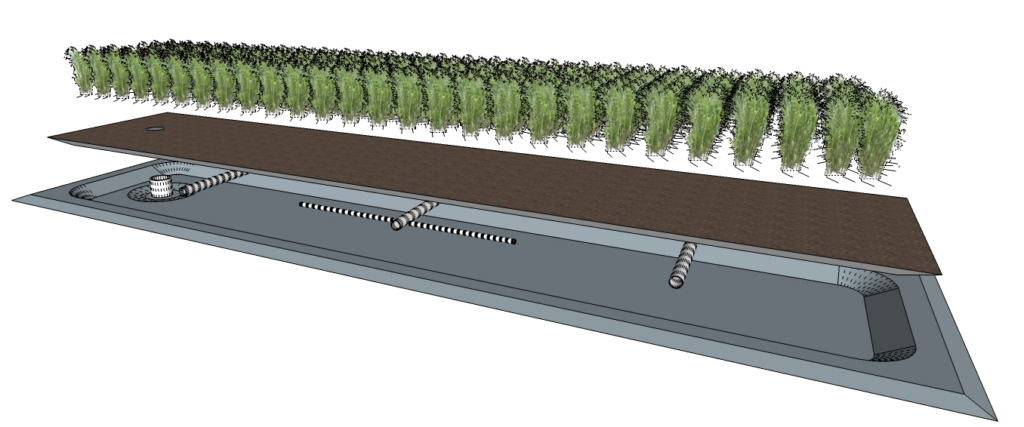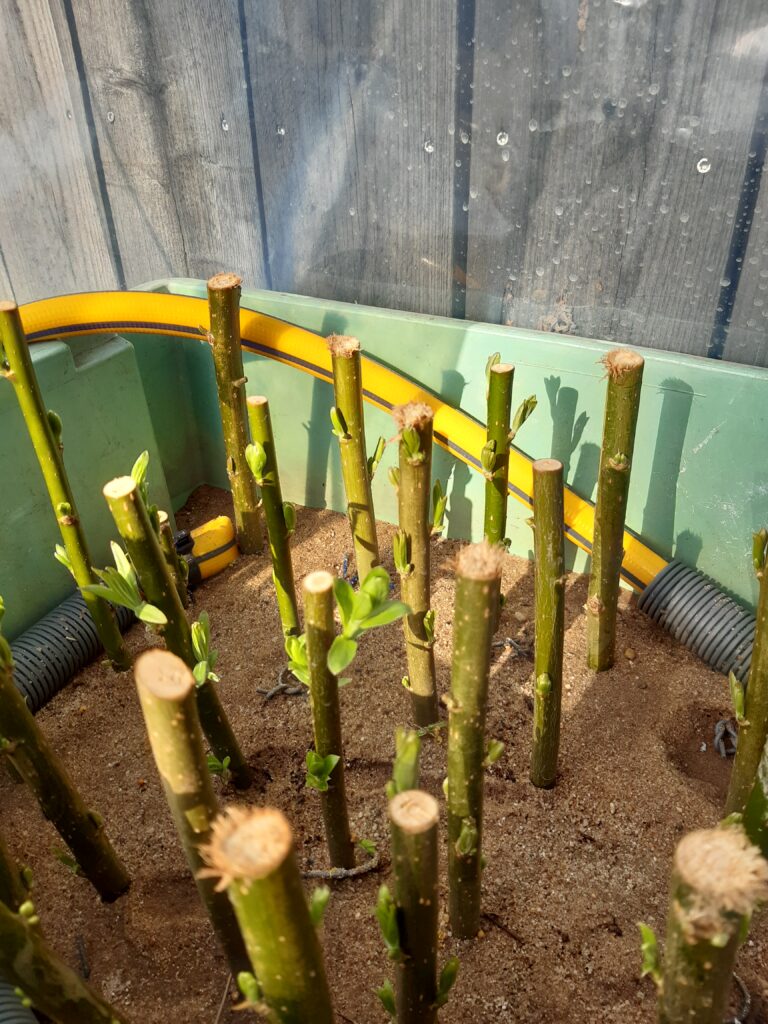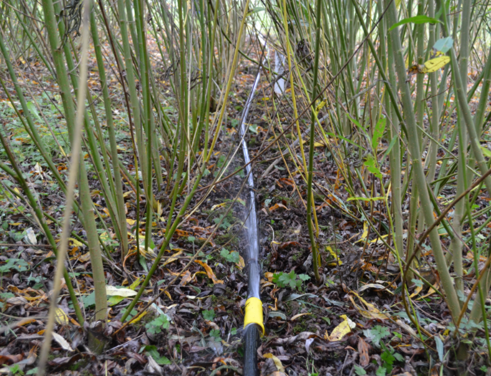Phytoremediation is a collective term for various ways of decontaminating contaminated soil, water and air with the help of plants. In phytoremediation, different plants’ abilities to extract, stabilise or degrade pollutants are utilized.
There are a significant number of studies showing that plants can extract and accumulate PFAS. Perfluorinated carboxylic acids (e.g. PFOA) with 3-11 carbons and perfluorinated sulfonic acids (e.g. PFOS) with 4-10 carbons are the compounds that have been studied most frequently. The distribution of PFAS in plants has also been shown to relate to chain length. Long-chain PFAS accumulate mainly in roots, while short-chain ones have a greater tendency to be transported upwards in parts of the plant above ground.
Within LIFE SOuRCE, phytoremediation will be used at the Swedish site (Hovgården) for reducing the levels of PFAS remaining in the water treated with SAFF even further. The content of PFAS in the treated water consists almost exclusively of short-chain PFASs. Salix, which is a fast-growing species of willow, has shown great potential as phytoextractor for shorter chained PFAS, and is already a known phytoremediation technique for reducing nutrients and metals in leachates and groundwater from/at landfills.
A pilot-scale phytoremediation system using different types of salix clones will be tested using water treated with SAFF. The removal and uptake of PFAS will be tested in multiple 1 m2 pilot scale phytoremediation systems. Measurements will include growth of roots and shoots, water consumption and distribution and levels of PFAS in the different plant tissues. It is expected that the concentration of PFAS in water after phytoremediation will be well below the drinking water directive limits.



| Cookie | Duration | Description |
|---|---|---|
| cookielawinfo-checkbox-analytics | 11 months | This cookie is set by GDPR Cookie Consent plugin. The cookie is used to store the user consent for the cookies in the category "Analytics". |
| cookielawinfo-checkbox-functional | 11 months | The cookie is set by GDPR cookie consent to record the user consent for the cookies in the category "Functional". |
| cookielawinfo-checkbox-necessary | 11 months | This cookie is set by GDPR Cookie Consent plugin. The cookies is used to store the user consent for the cookies in the category "Necessary". |
| cookielawinfo-checkbox-others | 11 months | This cookie is set by GDPR Cookie Consent plugin. The cookie is used to store the user consent for the cookies in the category "Other. |
| cookielawinfo-checkbox-performance | 11 months | This cookie is set by GDPR Cookie Consent plugin. The cookie is used to store the user consent for the cookies in the category "Performance". |
| viewed_cookie_policy | 11 months | The cookie is set by the GDPR Cookie Consent plugin and is used to store whether or not user has consented to the use of cookies. It does not store any personal data. |